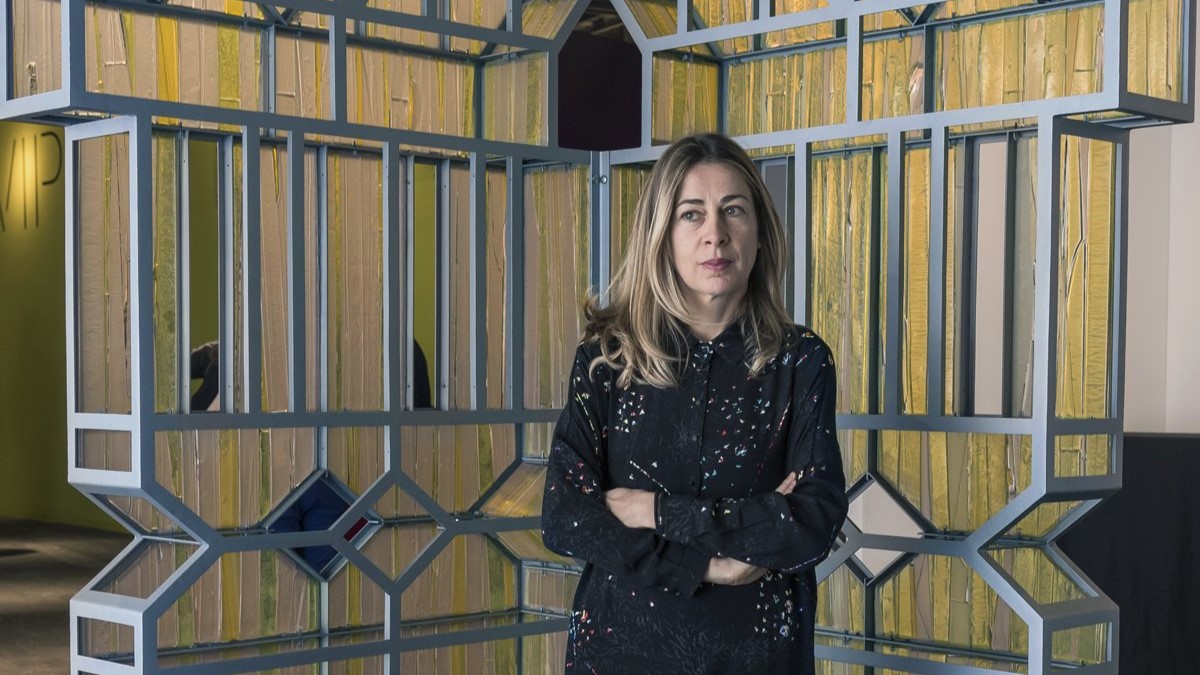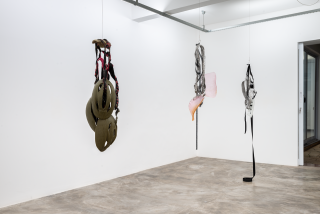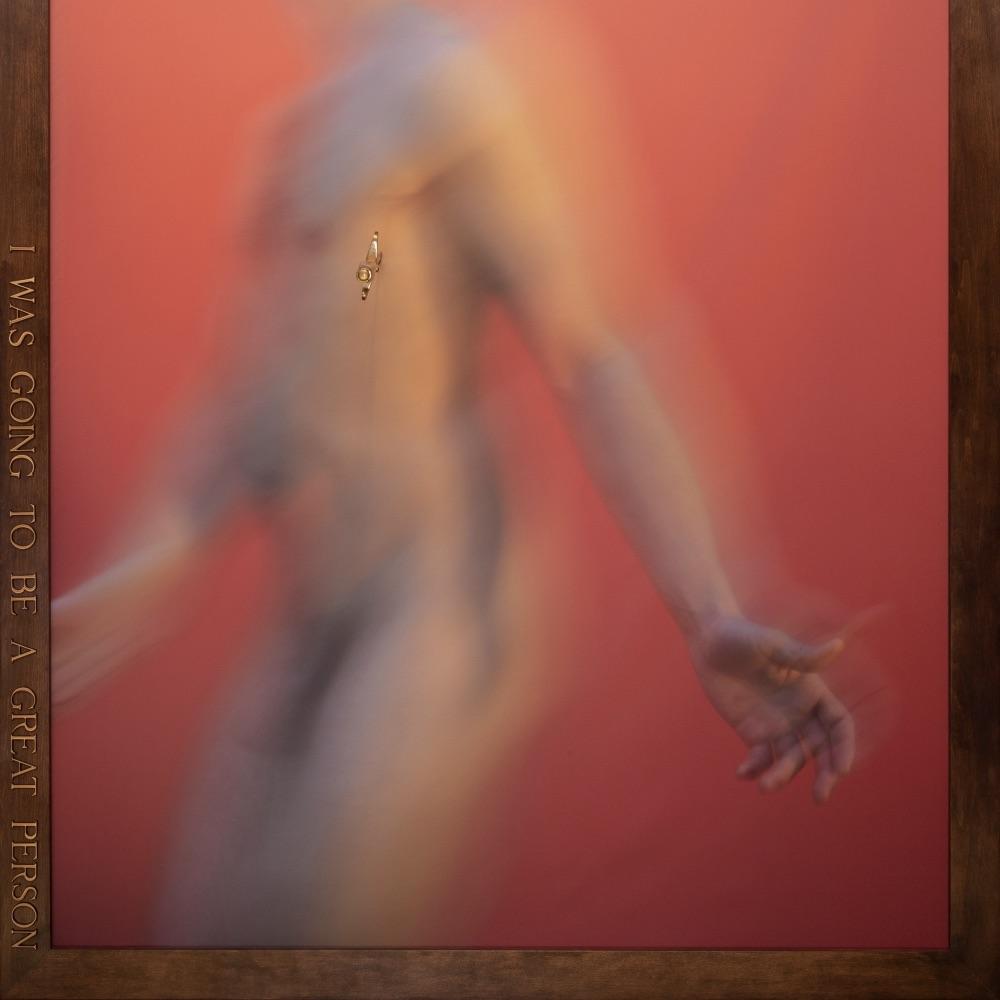
Belén Uriel (*1974) focuses her artistic practice on everyday objects because of their shape, material or use, and how the way we approach them can affect our visual perception of them. She is also interested in the social, cultural and functional aspects of the pre-figurations of their objects and redefines their form, scale or surface. He works with materials such as glass, metal, fabric and papier-mâché to reveal their sculptural qualities and thus refer to design and architecture. She is interested in the communication of a particular work within the exhibition space. Using organic shapes, she relates the objects to the human body, which is often imprinted or otherwise made present in the sculptures in various ways. Belén Uriel was born in Madrid. She currently lives and works in Lisbon. She has exhibited in prestigious galleries around the world, including New York, Lisbon, Madrid and Sau Paulo, and has won several art awards, including the Audemars Piguet Prize. She is represented by Madragoa Gallery. You can currently meet her at the Telegraph, where she is on a two-month residency. The residency will conclude with the traditional Open Studio, which will take place at the end of October. After that, however, you will be able to see her work in a group exhibition at Karpuchina Gallery on November 7.

Before your sculptural artistic practice, you were a photographer. How did you transition from photography to creating objects?
I was trained as a painter and as a photographer at the Fine Arts University in Madrid, so I guess my early works, or experiments or experiences, come from my training of representing on a two-dimensional plane... But actually, the photographs mostly feature props that I made or built specifically for the shoots. Everything in the picture – besides the space itself – was made, with very basic materials in the studio and then was photographed... So it was, three-dimensional pieces, objects and spaces, framed in a two-dimensional space, so it felt like a natural process to move from those scenarios to sculpture or three-dimensional work—I essentially just got rid of the frame.
In your objects, you refer to human body parts through things of daily use, for example, you use helmets and backpacks. Why are you interested in these things?
The objects I use to do my work come from a very domestic or daily life experience. They are objects that are so widely used across different societies and different cultural backgrounds that they almost become invisible to us. I call them “universal” objects. I’m interested in them because they reflect our social habits and the way we live and interact with the world. Then, I started to get more interested in those objects that touch the body directly, accommodate our bodies, and gestures. Those objects are normally used for activities to rest, leisure, and protection – these aspects of society interest me, the consumption and use of these objects and their meaning. As well as the idea of the object becoming a subject and the way we animate them.
Can you tell me something about the new contexts and meanings that these things have for you?
When working with everyday objects and materials, my approach involves questioning and understanding where they come from, how they are made, how their histories have been encoded, how we use them, and why. My sculptures often mimic the forms and relationships between the social and functional meanings of these objects - forms that I instinctively reproduce and unconsciously absorb from the context in which I live.
These objects reveal the relationships inherent in their production, materiality, transmission, and use. I use this information as a starting point for my work; it gives me ideas on how to transform them, and how to choose new materials, colours, and shapes, which are normally modified by my own body. I mainly work with fragments, exploring the relationships between different fragments and objects, as well as the structures that hold them together and are part of them. Where and how this new object or sculpture can exist now and what new meanings or associations it might reveal...
You work with imprinting the human body to various materials, for example, mattresses. What do these references to the human body mean to you?
The object often refers to the part of the body which is used with it. I usually use my own body to transform the objects I’m working with, leaving traces of use—the shapes and forms they take on through interaction. It’s a way of transferring our personality into these objects, and vice versa. We become objects; objects become subjects. This idea of mutual dependence and transformation fascinates me. They take on a hybrid presence that captures my interest. The sculptures adopt an anthropomorphic character, becoming performative objects that evoke the human figure and its functions, referring to the human body as a form of construction.
Through my practice, I reflect on the mutuality between the human body and objects and spaces of everyday use, about our interdependency with artifacts. I like to observe the relationships between body and things and the circumstances that ultimately dissolve the distinction between them. I’m interested in how objects or space become transformative when used in ways that were not intended, in the gap between the intentions and what is produced, revealing the unexpected potential new ways of thinking or making.
My more recent sculptures explore the reciprocal nature of the relationship between the body and the object, the epidermal contact that allows one to adapt to and shape the other. The sculptures become hybrid objects that point where one ends and the other begins. The idea of a body imprint preserved in the object or space is perpetrated in the making of the sculptures.
You work with materials like paper pulp, glass, bronze, or iron, which are traditionally associated with design and architecture. What led you to start working with these materials, and do you see any connections to these fields in your work?
My work methodology involves the use of pre-existing elements and objects, in some cases, they are of architectural origin. I copy these familiar objects in materials that render them inoperative; constructivist details, forms, patterns, and components from composite objects become isolated, and supporting structures become sculptures themselves. Through mechanisms of mimicking, repetition, doubling, and seriality as a making or working process, I subvert and disrupt the inherent characteristics of the object’s materiality: texture, colour, weight, and forms are re-evaluated. The works present an element of duplicity, of belonging to forms and designs well known and repeated in our present day. When experiencing the works you have a sense of recognition, identification, and projection and at the same time of strangeness... This ambiguity interests me as well in the sculptures.
Also, I am interested in the idea of projection, of desires and expectations that those objects can reveal...
Your work is pretty much about transforming materials, shapes, and forms. Is transformation one of your main topics?
In my practice, the process of making, working with different materials, and discovering new relationships between form and matter, is very important. The materials I choose as papier-mâché, glass, or metal, allow for repeated enactments of the same thing. Sometimes there is an allusion to mechanical manufacturing processes. Very often, I return to the process of casting because it allows me to repeat, rework, and reconfigure different forms, to deal with form, fragment, section, exterior, and interior. Casting is everywhere in our daily lives, a process that is on par with the way common objects are created nowadays: chain production and industrial casts. I make sculptures that retain a reference to a familiar origin while extending beyond. Sculptures are concerned with tactility, volume, and weight, which blur and at the same time juxtapose antagonistic sensibilities: soft and hard, fragile and robust, ephemeral and everlasting.
You can adapt your work to various conditions and spaces. Is the process of adapting important for you?
It is important, I think adapting is linked to improvisation, and both situations, I think are very important in the art practice, which, at the end of the day, is all about discovering. The need to adapt or improvise opens up new ways of seeing and doing, revealing things in a different, new way, and that's what art processes are all about.
Many of your artworks are hanging objects somehow floating in space. What is floating referring to? And what role does the fluid visuality of objects play in your work?
Yes, my sculptures are many times objects hanging in the space by a structure or devices. I am interested in verticality, which refers to the human body as well – we exist and act in a vertical position. Objects are hung by a structure or device (which is part of the sculpture, not just a structure or device) and this way refers to a feeling of dependence, attachment, and vulnerability... One of the qualities of working with glass is its sense of fluidity or organic nature through its transparency. That is also important for me, how to work with these opposite situations or characteristics, the fluidity of a body, and the industrial aspect of the objects that “construct” that body.
Autor: Mira Macík













